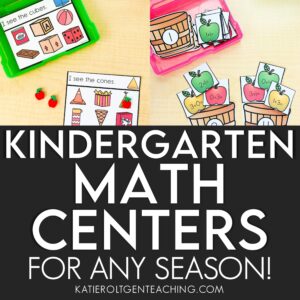
Menu
In case you by chance don’t know what teaching one to one correspondence means (because let’s be honest, if you asked your husband they might not even know) let’s chat about this. 1:1 correspondence is the process of helping children understand object-number correlation and matching an item with a corresponding number. For example, if you tell your child that they can have 3 cookies after dinner, then they would use one to one correspondence skills to physically count out 3 cookies from the package. See why this skill is so important? It is actually a huge life skill that we use in so many different ways throughout our day.
Preschool and kindergarten years are when we have students practice direct counting the most out of any other grade level. Our job as preschool and kindergarten teachers is to make sure that students have a strong understanding of pairing objects with numbers. It is the foundation for most all other math concepts. Without a strong understanding of matching a number to an item, students will struggle with other basic math concepts.
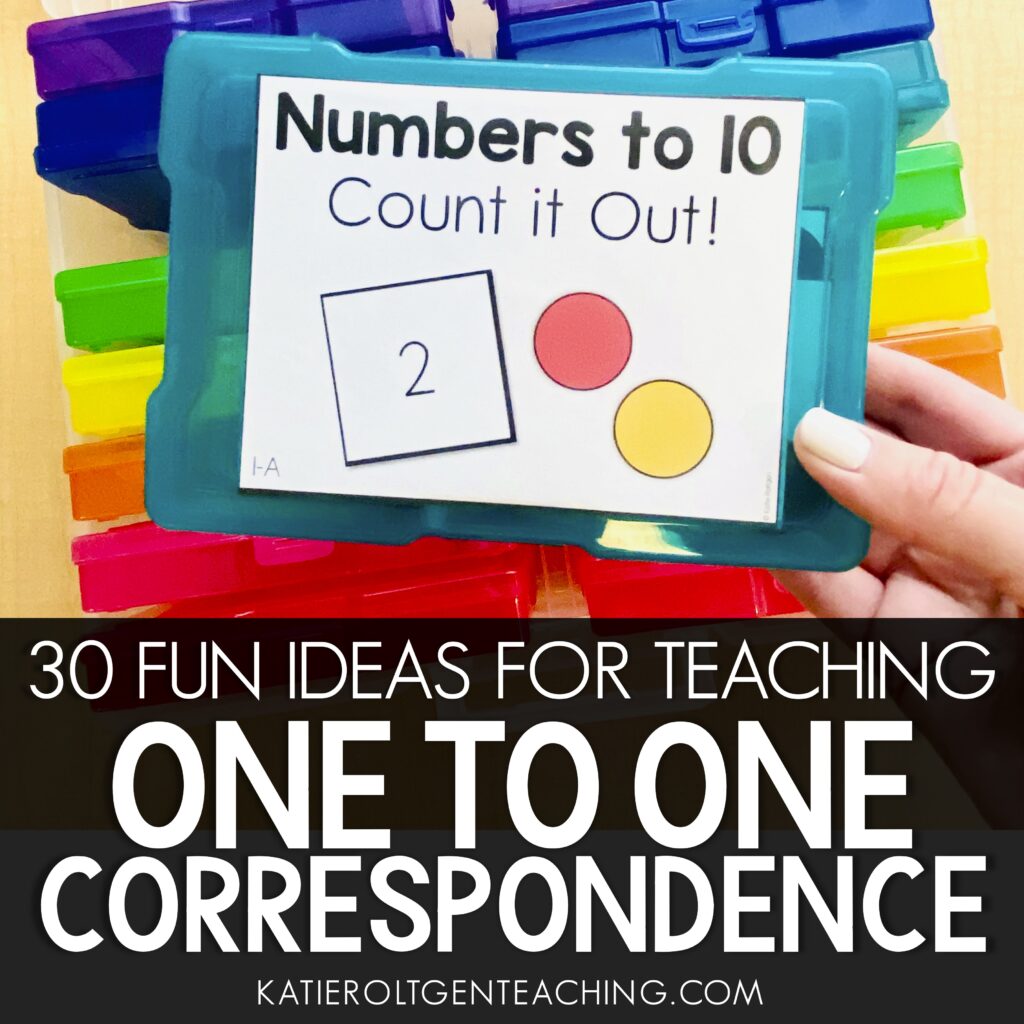
Think about some of the ways they will use quantitative pairing in the future:
counting coins or bills as change
planting new seeds in a garden
tracking fitness repetitions such as jumping jacks in PE
managing inventory if they work in a store
measuring ingredients for cooking
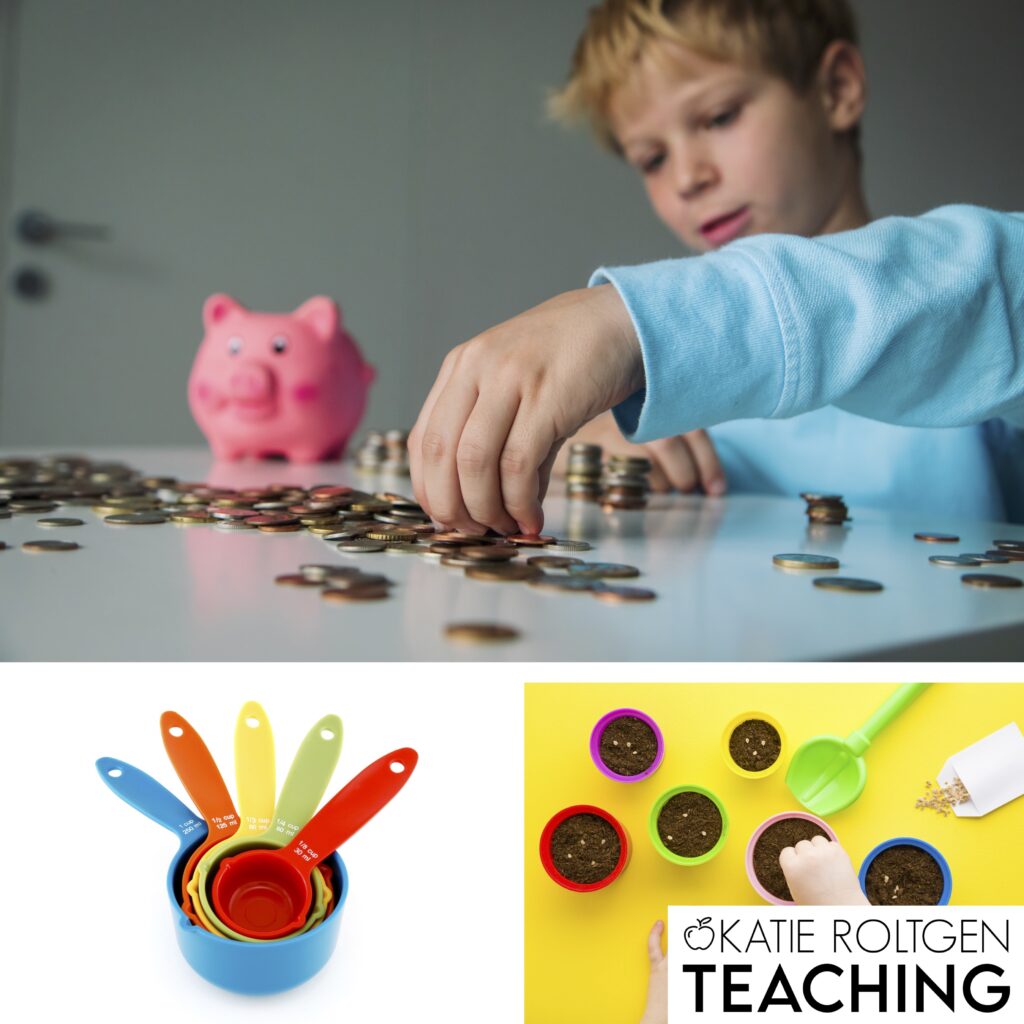
One to one correspondence is typically something that children start to understand how to do between the ages of 3 to 5 years old. Typically 3 year olds can count objects up to 5.
I have the BIGGEST tip to share with you about teaching 1:1 correspondence that most people seem to forget…
This tip is something that I have learned throughout my years as a kindergarten teacher and it’s sometimes the biggest mistake I see teachers make when trying to teaching students how to use 1:1 correspondence to count items.
Here’s the deal:
You must remember that students need to know how to rote count first! If they cannot rote count, then they are simply not ready to learn one to one correspondence skills yet.
I had many students still struggling with this concept even when they entered kindergarten. A lot of children struggled to count objects past 10. I did a lot of research on this topic and came up with some fun ideas to practice one to one correspondence activities. These ideas are definitely meant for any elementary school age that may struggle with this concept.
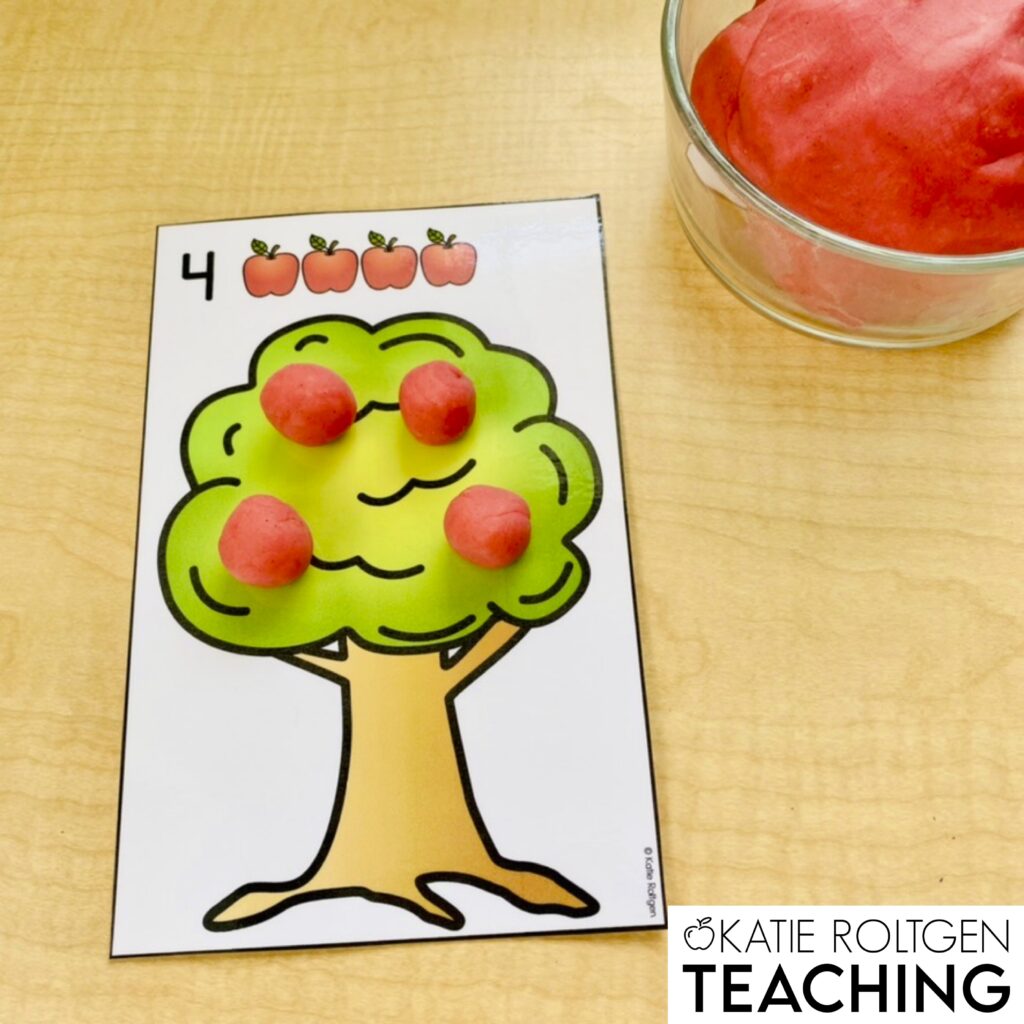
Play dough is without a doubt one of my all-time favorite sensory and fine motor tools to use in kindergarten. I usually stock up on multiple packs for the year and would ask for parent donations.
I have an awesome apple-scented homemade playdough recipe that adds a fun multisensory experience to the counting mats activity. This was always perfect to use in September when we do a thematic unit on apples. If you’d like to download the recipe and the counting mats for free, just fill out the form below and they’ll be sent straight to your inbox! Students roll out “apples” from the play-doh and count them on the number mat tree. They go wild for this activity from September Morning Tub Activities. Plus-if you use apple scented play dough, your room will smell amazing!
These were always a nice and simple activity to do one of the first weeks of school as a math station for one to one correspondence. I would typically tell them to put 15 fruit loops on their necklace just so I could see if they were able to do this independently and then they were all the same and they had a cute accessory to wear home or eat later if they got hungry! You could also tie this into math by having them create a pattern out of their colors if you wanted.
For teaching one to one correspondence this way, simply write numbers 1-20 on separate pieces of paper and students put the corresponding amount of stickers on that page. These could be any kind of stickers that you have on hand. Bonus-it works on fine motor skills also!
These types of number matching puzzles were always something I liked to have on hand in my classroom to pull for small groups or math centers for the students that need help with counting objects.
This is a fun and different idea. Give students large number flashcards to lay on the floor. Then have them build a lego tower as tall as it says. I love this set from Life Over C’s because she has visual examples of what it should look like on each card.
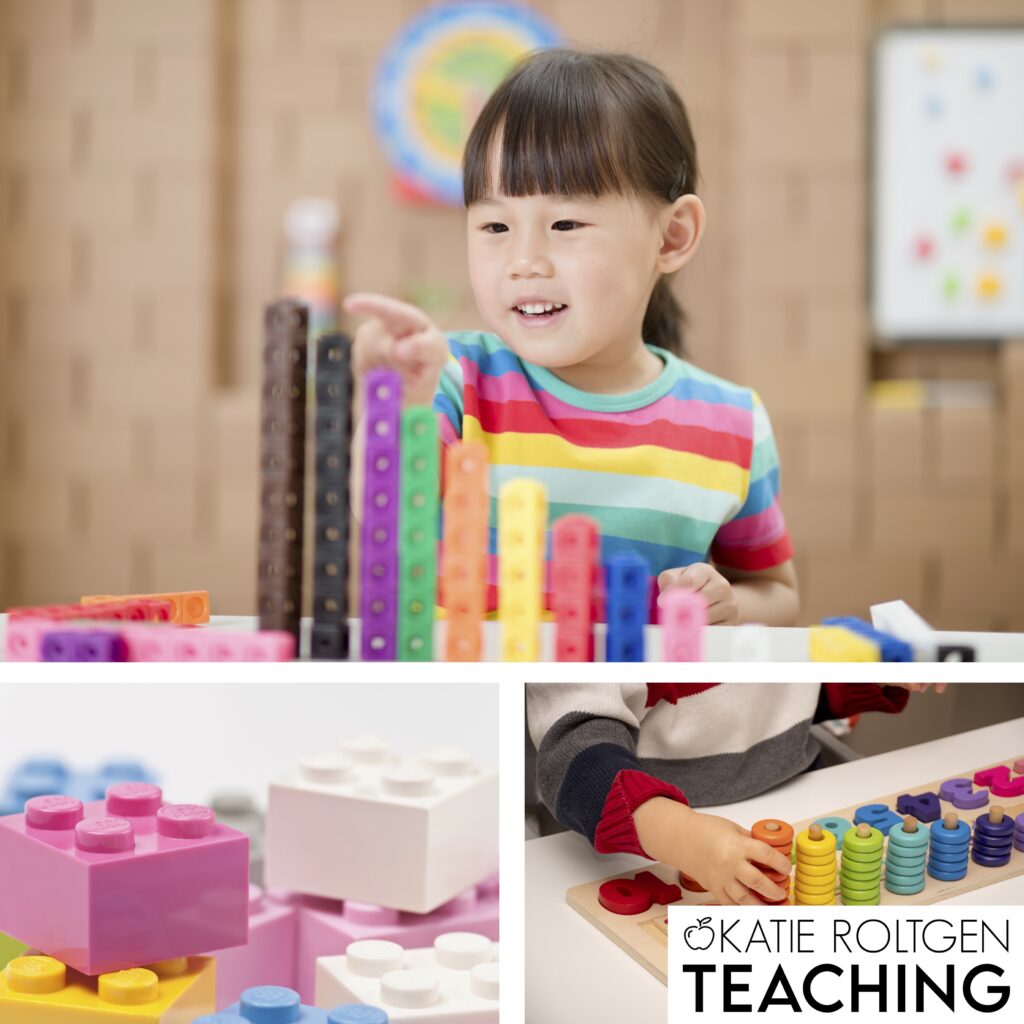
These kindergarten math task boxes were specifically created to be used in math centers during 1st and 2nd quarter of kindergarten. The goal is to help students develop a deeper understanding of counting using 1:1 in math. They are not thematic and can actually be used anytime of the year.
These tasks have different activities for counting from 1-20 such as:
Picking a number card and using counters to show that amount
counting the dots and finding the number puzzle piece that matches
using ten frames to count
count the pictures and use a clothespin to clip the correct number and more
They were a HUGE life saver to have prepped and ready to go at the beginning of the year to start practicing those basic counting skills! Sometimes I even used these for morning work!
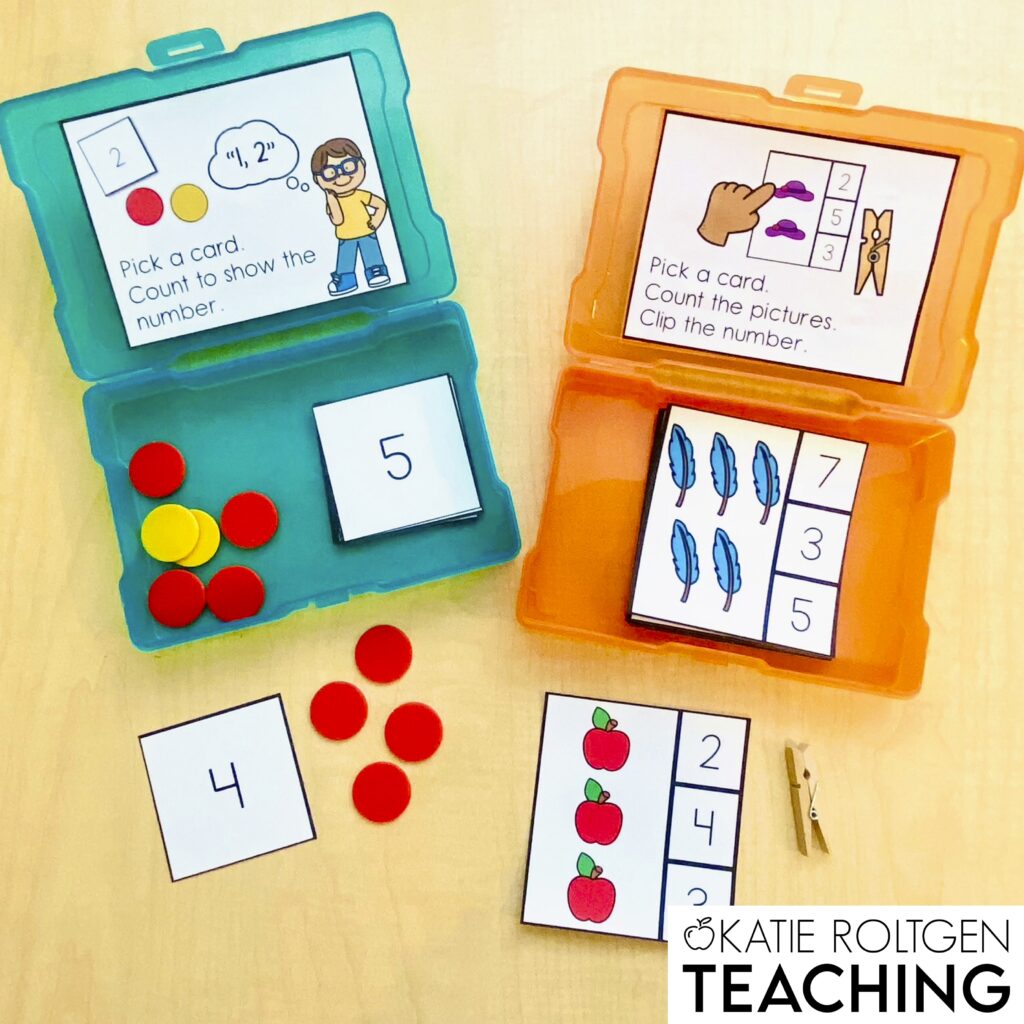
Anyway that I can use what we are learning and apply it to real life skills it is a win-win in my book. I LOVED sneaking in one to one correspondence counting during snack time by having students count out their own snack amount.
Roll the dice, count the dots! Say or write the number depending on the student’s level. If you have a giant floor dice like this one, this game is 10X the fun!
This one is simple- write a number in large print on a piece of paper (or print it from your computer.) The child uses a bingo dauber and daubs the paper that many times. This makes a super easy math center during one of the first weeks of kindergarten!
Provide pipe cleaners (or straws) and beads. Kids thread beads onto straws to correspond to the number you give them.
Draw circles with numbers on the ground. Kids jump to the circles and place objects inside.
Did you know a deck of cards is actually perfect for teaching one to one correspondence in kindergarten? If you use the numbers Ace- ten from the deck only, just lay them out and give students a bag of buttons. You will notice that the cards have as many symbols on the card as it’s worth. For example, a 3 of diamonds has 3 diamonds on the card. Students can then practice counting out three buttons and laying them on top of the diamond pictures.
This one is really simple. All you need is a large number card laminated and students clip the corresponding amount of clothespins to the card.
This little adorable apple craftivity was always a go-to of mine during back to school time in September. It was a great way to practice counting things one by one and get a grasp for where new students were at. Plus, it makes the perfect back to school bulletin board display!
This idea is from Modern Preschool and it is FREE! Simply print out their cute little ice cream cone mats and grab some colorful pom poms to use with them!
Lay out a jump rope in a loop. Kids jump inside the loop a certain number of times. (Could also use a hula hoop for this if you have one or borrow from the PE teacher.) If you think they can handle it, try actually having them jump rope!
Draw circles on paper plates and write numbers. Kids place objects inside each circle to “match” the amount there and count as they go.
This one is a lot of fun for teaching one to one correspondence because most students have not done this activity before. Make some simple cupcakes out of play dough. Then, assign each cupcake a number and have students put that many “candles” in the cupcake using popsicle sticks.
Provide numbered cards and let kids use a hole punch to punch holes according to the number.
Good ‘ole fashioned hopscotch is sometimes super simple and a good way to get kids moving to practice this math skill!
This is a set of number mats for numbers 1-20. They are excellent for math centers and they require very little preparation by you! Simply print, laminate or place in page protectors, and place them at a center with dry-erase markers. Students use the dry erase markers to trace the number, trace the number word, identify the number and draw it in a ten-frame.
I love to put “Five Little Ducks” or “Ten in the Bed” up on the SMARTboard for students to sing along and count during these stories to practice number matching.
There are SO many different things you can do with this at any times of the day when you have a free moment! Line up for recess and count off. Take turns counting the number of boys and number of girls. How many people are wearing jeans today? Who is buying lunch today? This is another great way to use the skill of 1:1 counting in real life scenarios.
Technology is a HUGE part of education these days. There are a lot of great ways that students can use technology to help them drag and drop count. Try these Strawberry Patch Ten Frame Counting Boom Cards for example.
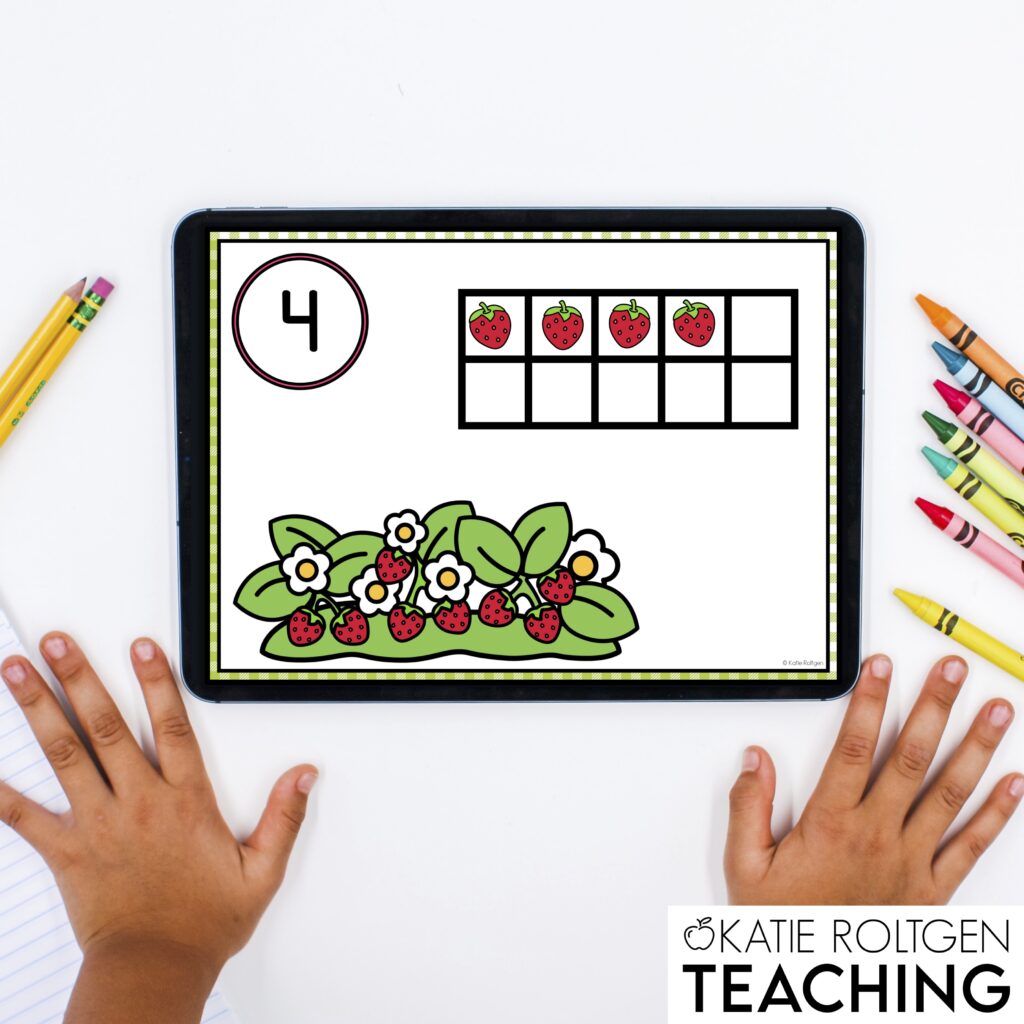
I like this idea from The Activity Mom. It is so simple and really helps students learn to count one item in each spot.
Provide dice and stampers. Students roll the dice, count the dots and then stamp the matching number on paper.
Prepare shoeboxes with numbers on the lids and small objects inside. Students match the quantity of objects to the corresponding numbered shoebox.
This one is great for a Friday afternoon when you are feeling a little bit rowdy. Scatter colored pom-poms around the room. Students pick up pom-poms and place them on numbered mats according to the quantity.
Pair students up and provide each pair with numbered cards and small objects. One student places an object on a card and their partner matches the quantity with the corresponding number.
Use a post-it note to write and place a number on a jar. Students count the correct number of items into the jar.
I hope you found these 30 different ideas to help teach one to one correspondence helpful!